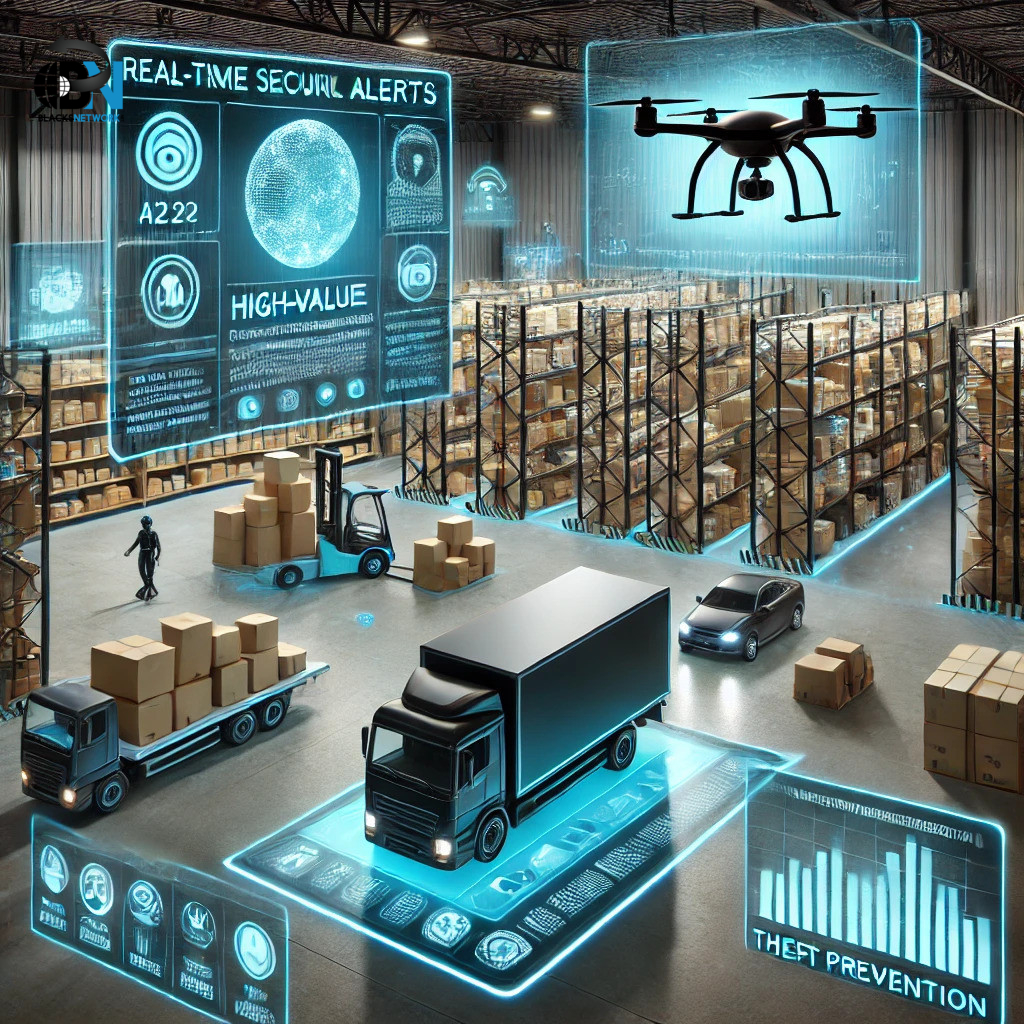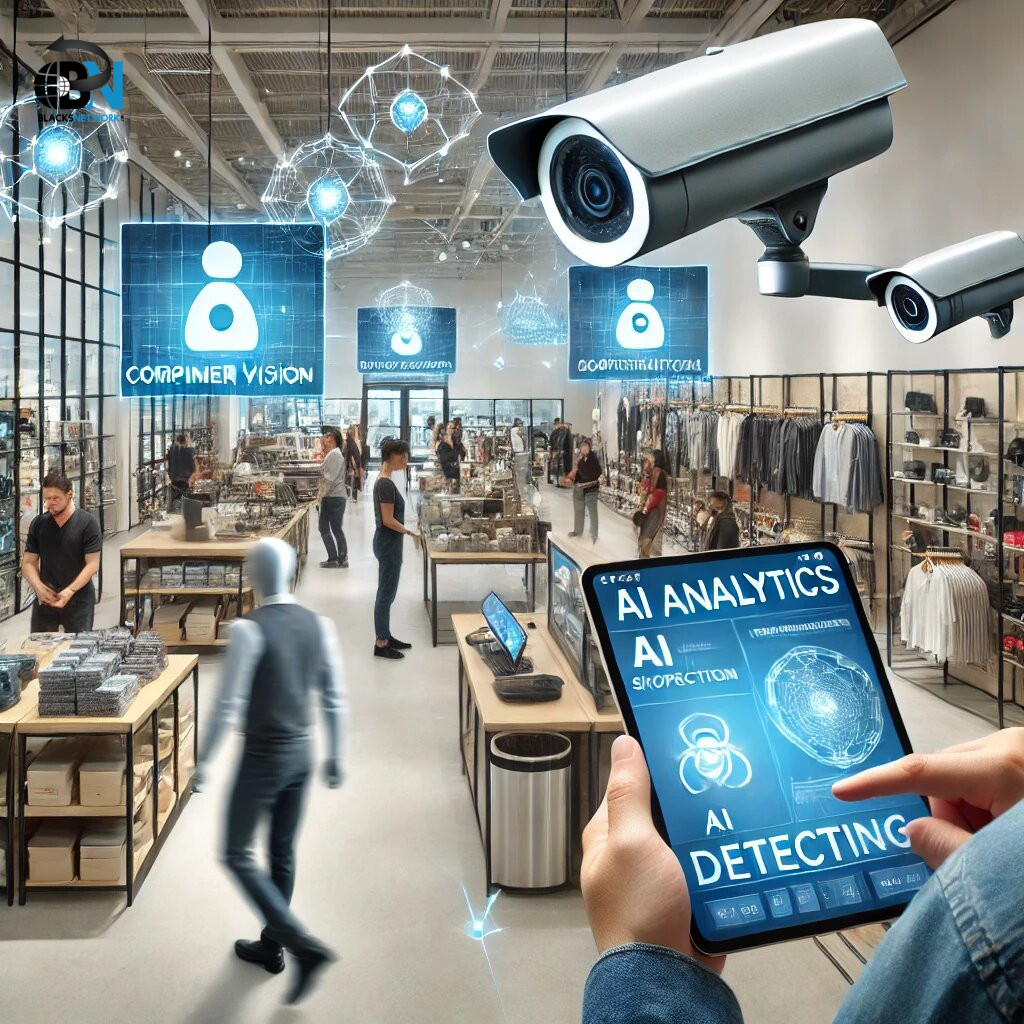AI-Powered Theft Detection for Public Transportation and Airports
The Growing Need for AI Theft Detection in Public Transport and Airports
With millions of people passing through train stations, metro systems, and airports daily, theft and security breaches are inevitable. Traditional surveillance methods are often reactive, relying on human operators to detect suspicious activity. However, AI-driven theft detection solutions offer a proactive approach, identifying potential threats before they escalate.
Common Theft-Related Challenges in Public Transport and Airports
Pickpocketing – A frequent problem in crowded metro stations, buses, and airport terminals.
Luggage Theft – Unattended bags and suitcases are prime targets for thieves.
Unauthorized Access – Criminals attempting to bypass security checkpoints.
Payment Fraud – The use of stolen credit cards or fraudulent transactions.
Cargo and Baggage Theft – Theft of valuable goods from airport storage facilities.
https://fastedge.ai/ai-theft-detection/



Fast Edge
AI theft detection is revolutionizing warehouse and logistics security. By utilizing advanced video analytics, predictive modeling, IoT sensors, and biometric authentication, businesses can significantly reduce losses and enhance operational efficiency.
Investing in AI-powered theft detection is no longer a luxury—it’s a necessity for modern warehouses and logistics companies looking to safeguard their assets and optimize security.
Are you ready to implement AI theft detection in your business? Start exploring AI-powered security solutions today!
https://fastedge.ai/ai-theft-detection/

How AI Theft Detection is Revolutionizing Security in Retail and Banking
Introduction
The rapid advancement of artificial intelligence (AI) has transformed various industries, including security. In retail and banking, AI-powered theft detection is significantly enhancing security measures, reducing financial losses, and improving customer trust. Traditional security systems are often reactive, but AI-driven solutions enable real-time theft prevention and fraud detection, making businesses more resilient against security threats.
This blog explores how AI theft detection is revolutionizing security in retail and banking, its key features, benefits, challenges, and future potential.
The Growing Need for AI Theft Detection
1. Retail Sector Challenges
Retailers face significant losses due to theft, shoplifting, and fraudulent transactions. The National Retail Federation estimates billions in losses annually from shrinkage, which includes theft by customers, employees, and organized crime rings. Traditional surveillance systems and security personnel have limitations, making AI-powered theft detection an essential upgrade.
2. Banking Industry Vulnerabilities
Banks and financial institutions are prime targets for fraud, cybercrimes, and identity theft. From ATM skimming to digital banking fraud, AI-powered systems can analyze vast amounts of data, detect anomalies, and prevent financial crimes in real time.
How AI Theft Detection Works
1. Computer Vision and Video Analytics
AI-powered surveillance cameras analyze live video feeds to detect suspicious activities such as loitering, unauthorized access, or abnormal movements. These systems can differentiate between genuine customers and potential threats, reducing false alarms.
2. Facial Recognition and Identity Verification
AI-driven facial recognition technology helps identify repeat offenders, known shoplifters, or individuals attempting fraudulent transactions. In banks, this technology enhances customer verification and prevents identity theft.
3. Behavioral Analysis and Predictive AI
Machine learning models assess customer behavior patterns to detect irregular actions. For example, if an individual frequently picks up and puts down items without purchasing, AI can flag the behavior for further monitoring.
4. AI-Powered Transaction Monitoring
Banks leverage AI to detect fraudulent transactions by analyzing spending patterns, transaction speeds, and location inconsistencies. AI can block suspicious transactions and alert customers instantly.
5. AI-Enabled Sensors and Smart Security Systems
AI-integrated security sensors detect unauthorized access in stores, ATMs, and bank vaults. These systems can trigger automatic lockdowns or alert security teams in real time.
Applications of AI Theft Detection in Retail and Banking
1. Retail Theft Prevention
AI monitors customer and employee actions to prevent shoplifting and internal theft.
Automated alerts notify security personnel of suspicious activities.
Smart self-checkout systems ensure all scanned items match actual purchases.
2. Banking Fraud Prevention
AI detects ATM fraud and card cloning attempts.
AI-powered cybersecurity measures prevent phishing attacks and unauthorized access.
Biometric authentication enhances security in digital banking platforms.
3. Smart Inventory and Asset Protection
AI tracks product movements to prevent stock theft and losses.
AI-driven RFID tags and GPS tracking secure high-value items.
4. Cybersecurity and Data Protection
AI safeguards online banking platforms from data breaches.
AI-driven firewalls detect and neutralize hacking attempts.
Secure AI authentication systems prevent unauthorized access.
Benefits of AI Theft Detection
1. Real-Time Security Monitoring
AI provides instant alerts, enabling security teams to take proactive measures before theft occurs.
2. Enhanced Accuracy and Reduced False Alarms
AI differentiates between genuine threats and normal activities, reducing false alarms and unnecessary interventions.
3. Cost Savings for Businesses
AI-powered security minimizes the need for excessive security personnel, reducing operational costs.
4. Improved Customer Trust and Experience
AI-driven security enhances customer confidence by ensuring a safe shopping and banking environment.
5. Scalability and Adaptability
AI theft detection solutions can be implemented across multiple retail stores and banking branches, ensuring consistent security.
Challenges and Ethical Considerations
1. Privacy and Data Protection
AI security systems collect and process large amounts of data, raising concerns about privacy violations and potential misuse.
2. Bias in AI Algorithms
AI models may exhibit biases in facial recognition and behavioral analysis, leading to false accusations or profiling issues.
3. Implementation Costs
Deploying AI-powered security systems requires significant investment in technology and infrastructure.
4. Cybersecurity Threats
AI security systems themselves must be protected against hacking and cyber threats to ensure their reliability.
Future of AI Theft Detection in Retail and Banking
AI theft detection will continue to evolve with advancements in deep learning, automation, and IoT integration. Future developments may include:
AI-driven drones for security patrolling and monitoring.
Blockchain-based AI identity verification for enhanced security.
Advanced predictive analytics to prevent theft before it occurs.
AI-powered robotic security assistants for on-site protection.
Conclusion
AI theft detection is transforming security in the retail and banking sectors by providing real-time, intelligent, and proactive solutions. By leveraging AI-powered surveillance, behavioral analysis, and fraud detection, businesses can significantly reduce theft-related losses and enhance customer safety. However, ethical considerations and privacy concerns must be addressed to ensure responsible AI deployment. As technology advances, AI-driven theft detection will continue to shape the future of security, making businesses more resilient against both physical and digital threats.
https://fastedge.ai/ai-theft-detection/
Benefits of Vehicle Counting AI
Accuracy: AI eliminates human error and provides precise counts, even in complex traffic scenarios.
Real-Time Insights: Data is processed instantly, enabling quick decision-making and response.
Scalability: AI systems can monitor multiple locations simultaneously, making them ideal for large cities.
Cost-Effectiveness: Automating vehicle counting reduces the need for manual labor and expensive hardware.
Versatility: AI can analyze various types of vehicles and adapt to different environments, such as highways, intersections, and parking lots.
https://fastedge.ai/accurate-vehicle-counting/
How AI Theft Detection Works in Retail
AI-powered theft detection combines several advanced technologies, including:
1. Computer Vision for Real-Time Monitoring
AI-driven security cameras use computer vision to analyze video footage in real time. Unlike traditional CCTV cameras that require human monitoring, AI-powered systems can:
Identify suspicious movements, such as hiding items in clothing.
Detect repeat offenders using facial recognition.
Track abnormal customer behavior, such as lingering in high-value product sections.
2. Machine Learning for Behavioral Analysis
Machine learning algorithms analyze customer behavior patterns to identify potential theft risks. These systems can detect:
Frequent visits without purchases.
Customers avoiding eye contact with staff.
Unusual movements, such as switching price tags or concealing goods.
3. AI-Powered Self-Checkout Theft Prevention
Retailers using self-checkout systems face increasing theft risks. AI enhances security by:
Using weight sensors to verify scanned items.
Detecting "skip-scanning" (scanning a cheaper item instead of an expensive one).
Alerting staff when anomalous transactions occur.
4. Predictive Analytics for Theft Prevention
AI theft detection systems use predictive analytics to analyze historical theft data and predict high-risk areas in the store. Retailers can:
Identify peak theft hours and assign security accordingly.
Determine which products are most stolen and place them under increased surveillance.
Improve store layout to minimize blind spots.
Benefits of AI Theft Detection in Retail
1. Enhanced Security and Faster Theft Detection
AI systems can analyze millions of data points in seconds, instantly alerting security personnel to suspicious activity. This speeds up response time and prevents losses before they occur.
2. Reduced False Alarms
Traditional motion sensors often trigger false alarms due to normal customer behavior. AI theft detection minimizes these errors by distinguishing between genuine threats and routine shopping activity.
3. Cost Savings for Retailers
Implementing AI-driven theft detection can significantly reduce losses from shoplifting and fraud. Although AI technology requires an initial investment, it saves money in the long run by preventing theft-related financial losses.
4. Improved Employee Monitoring
AI doesn’t just detect external theft—it also monitors employee behavior to prevent internal theft and ensure compliance with store policies.
5. Seamless Integration with Existing Systems
Modern AI theft detection systems can integrate with:
Existing CCTV networks to enhance security.
Point-of-sale (POS) systems to detect fraudulent transactions.
Inventory management software to track missing items in real time.
Challenges of Implementing AI in Theft Detection
Despite its advantages, AI theft detection faces several challenges:
1. Privacy Concerns
AI-powered facial recognition and behavioral tracking raise concerns about customer privacy. Retailers must ensure compliance with data protection laws such as GDPR and CCPA.
2. High Initial Costs
Installing AI-powered cameras and software requires a significant investment. However, many retailers view it as a long-term cost-saving measure due to theft prevention.
3. Integration Complexity
Some AI solutions may not be compatible with older security systems, requiring businesses to upgrade their infrastructure.
4. Risk of Bias in AI Algorithms
AI systems trained on biased data may disproportionately flag certain customer groups as suspicious. Retailers must ensure fair and unbiased AI implementation to prevent discrimination.
Real-World Examples of AI Theft Detection in Retail
Several major retailers are already leveraging AI to combat theft:
1. Walmart
Walmart uses AI-powered computer vision cameras to detect theft at self-checkout kiosks. Their AI system, called Missed Scan Detection, prevents "skip-scanning" and alerts store associates when a customer fails to scan an item.
2. Amazon Go
Amazon Go stores utilize AI-powered checkout-free technology that tracks customer movements, automatically billing them for items taken off the shelves. This eliminates self-checkout fraud entirely.
3. CVS Pharmacy
CVS employs AI surveillance to identify repeat shoplifters and alert security teams in real-time. Their system also monitors customer behavior for signs of potential theft.
4. Home Depot
Home Depot integrates AI with POS transaction monitoring to detect suspicious returns, fraudulent purchases, and employee theft.
The Future of AI Theft Detection in Retail
As AI technology continues to evolve, the future of AI theft detection looks promising. Here are some key trends:
1. AI-Powered Robotics for Theft Prevention
Retailers are exploring AI-driven security robots that patrol stores, identify suspicious behavior, and deter criminals.
2. Blockchain Integration for Secure Transactions
Blockchain technology can complement AI by creating tamper-proof transaction records, reducing fraudulent returns and financial theft.
3. More Advanced Biometric Security
Future AI systems will incorporate biometric authentication, such as fingerprint and voice recognition, to prevent unauthorized access to store areas.
4. Enhanced Edge AI for Faster Theft Detection
Edge AI, which processes data directly on local devices rather than cloud servers, will enable faster theft detection without requiring constant internet connectivity.
https://fastedge.ai/ai-theft-detection/













 1 (877) 773-1002
1 (877) 773-1002